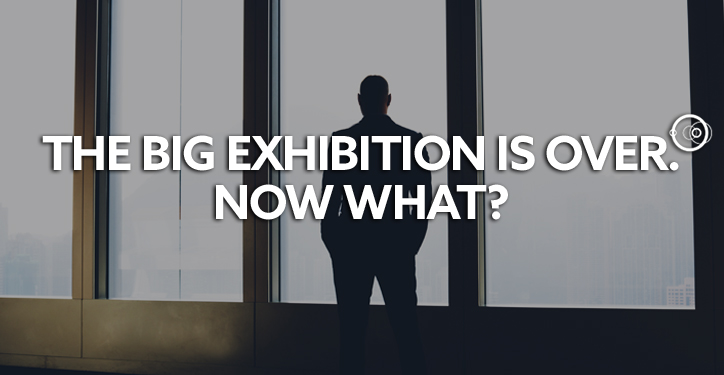You did it. After months of designing your stand, sourcing branded stress balls and briefing your sales team, you've made it to the end of Offshore Europe. Now relax, the stress is over.
But don’t get too comfortable just yet. It's time to take a step back and reflect. How did your event planning go? What do you wish you did differently? Does your ROI look healthy?
If you don't review your performance, how will you know if it is worth doing again?
Below are four actions to take after the big exhibition–from following up with leads to identifying the likely causes of failure–before you can kick your feet up and call it a day.
Review your objectives
First things first: an internal debrief. Meet with your team the day after the exhibition to share highlights, lowlights, discuss the new contacts you met and review your objectives.
Were you launching a new product line? Or unveiling your new brand image? Perhaps looking to generate more sales opportunities? Why did you book a booth at the exhibition in the first place?
Whatever your objectives were, discuss whether or not this exhibition helped you reach them and why.
Calculate your ROI
Your company's head of finance or your line manager will likely be the most interested in your ROI. A well-presented ROI is vital when demonstrating the impact of your team's activity to management.
You probably already know how to calculate your marketing ROI, but if not here's a refresher:
1. Calculate the full cost of attending the show. Costs include: stand, staffing, refreshments, catering, marketing collateral, travel and accommodation (if needed).
2. Once you know the total cost, compare this to the revenue or the leads that have been generated as a result of the show.
3. Finally, take these two figures and input them into the below formula.
Return – Investment
Investment
4. ROI is typically presented as a percentage, so multiply your results by 100.
Download our ROI calculator here. We calculate our clients ROI after every campaign to help inform future communication strategies and planning.
Follow up with your contacts
You collected over 100 business cards? Nice. Now what?
Strike while the iron is hot. All those business cards you collected should be put to good use. Follow up with your leads, set up second meetings and connect with them on LinkedIn.
If you've read our blog on building connections, then you will be familiar with active listening. If you engaged in active listening, then all of the meaningful conversations you had on customer pain points should now come in handy. If you have relevant material or have read a useful article relating to their specific problems, share it with your contacts. New connections will be much more receptive to personalized content and discussions that could benefit them in the long run.
Start planning
My experience planning events in the B2B and B2C world has taught me one thing: start planning now. Nobody wants to be hunting for suppliers at the last minute. Exhibitions are a big investment and require a lot of effort to make them worthwhile.
After your internal debrief, then you should have a solid list of findings to build the foundation for your next event plan.
Your sales team may have requested new material or maybe there is a better spot in the exhibit hall? Take a look at your options as soon as you can and see if there is anything you can organise while your insights are fresh.
You–and your team–will be thankful in a year’s time.
Over to you
Events work because they're different than every other type of marketing. They're immersive, entertaining and memorable. Start by identifying the memory you want attendees to walk away with and build your plan around it.
